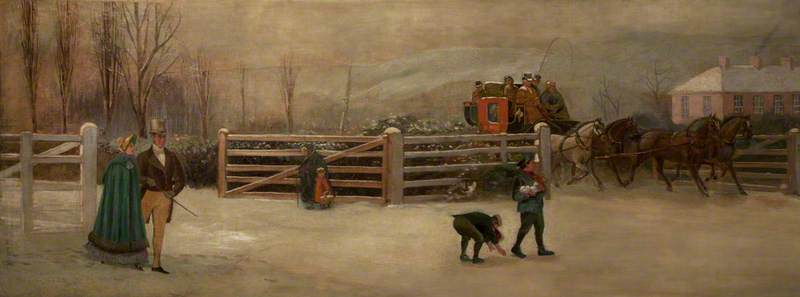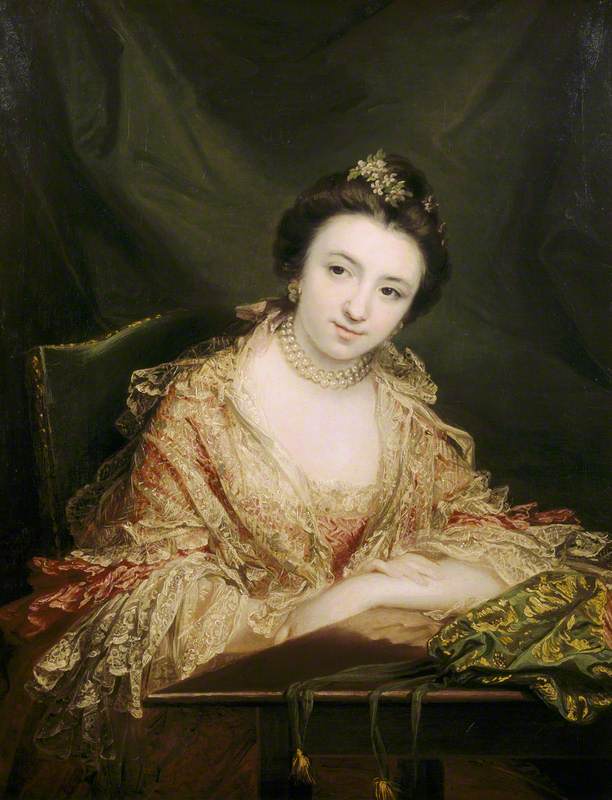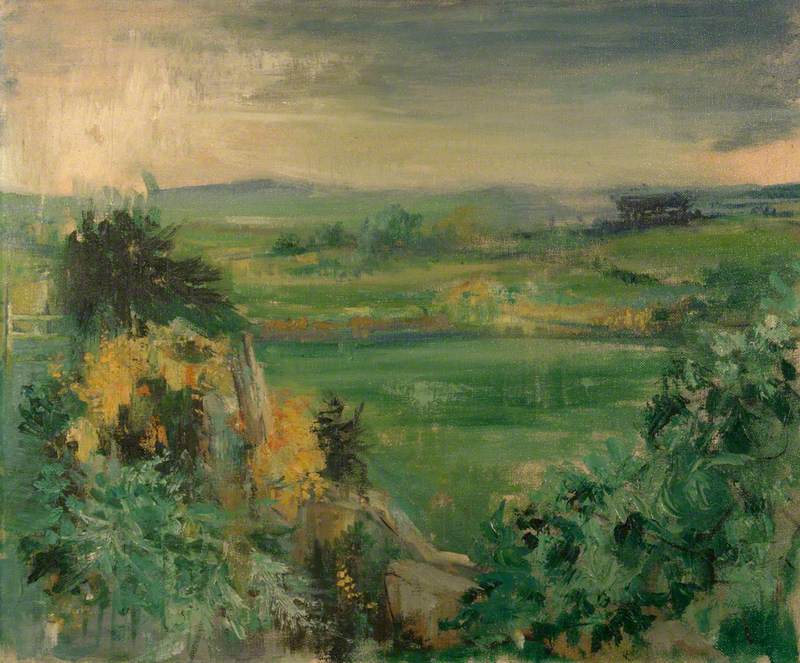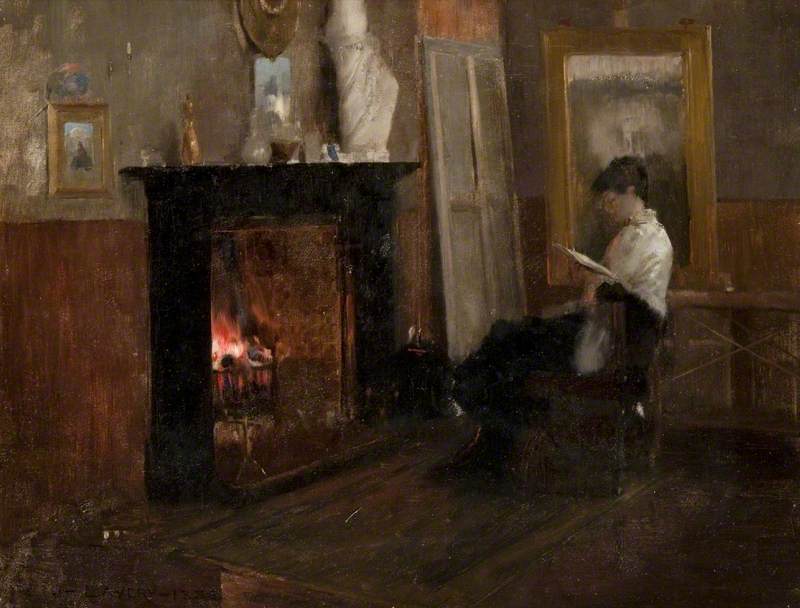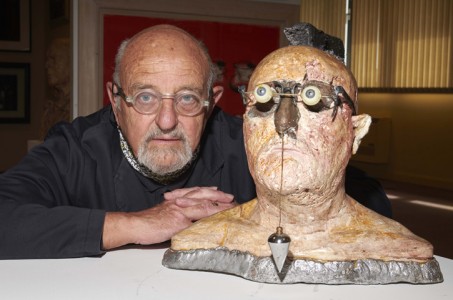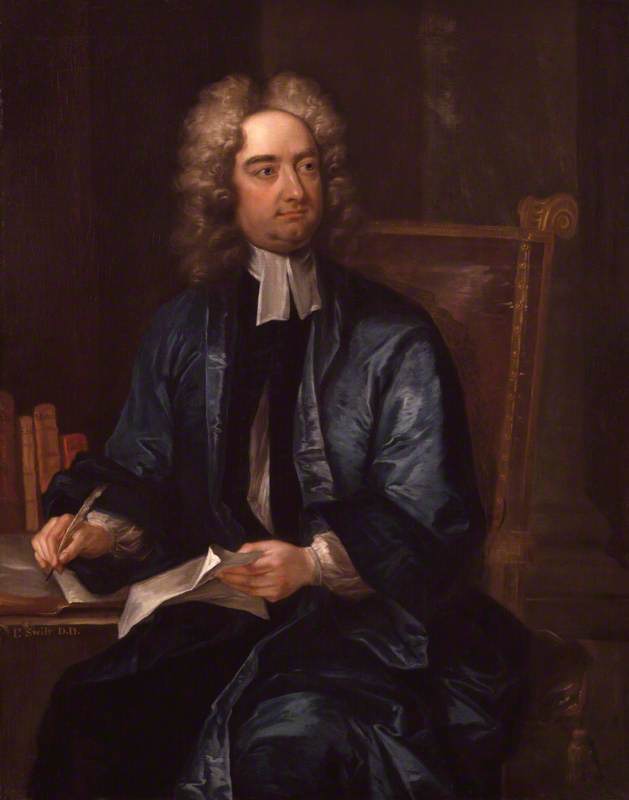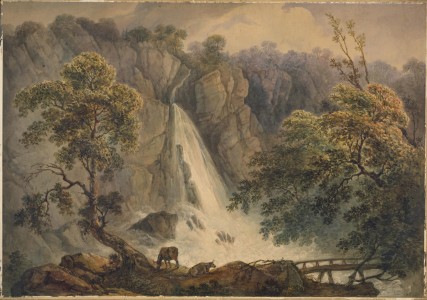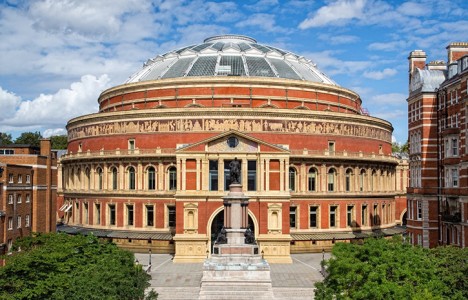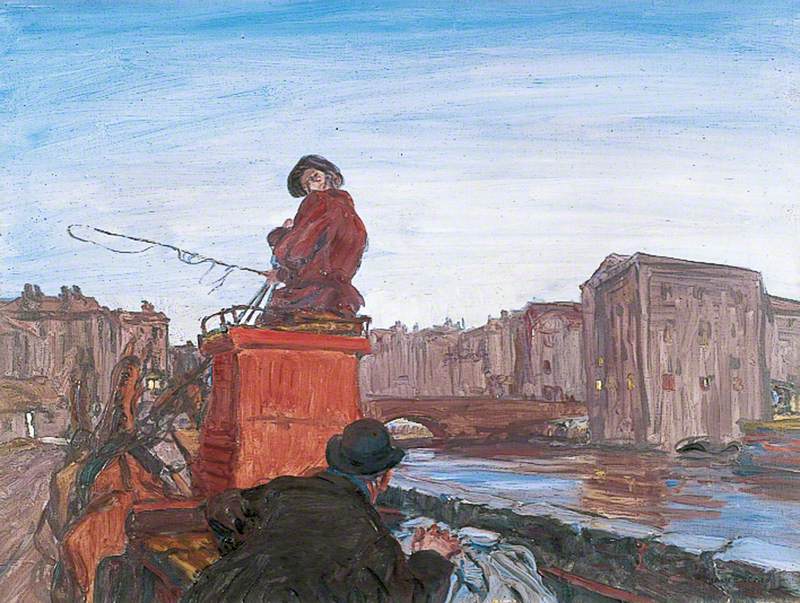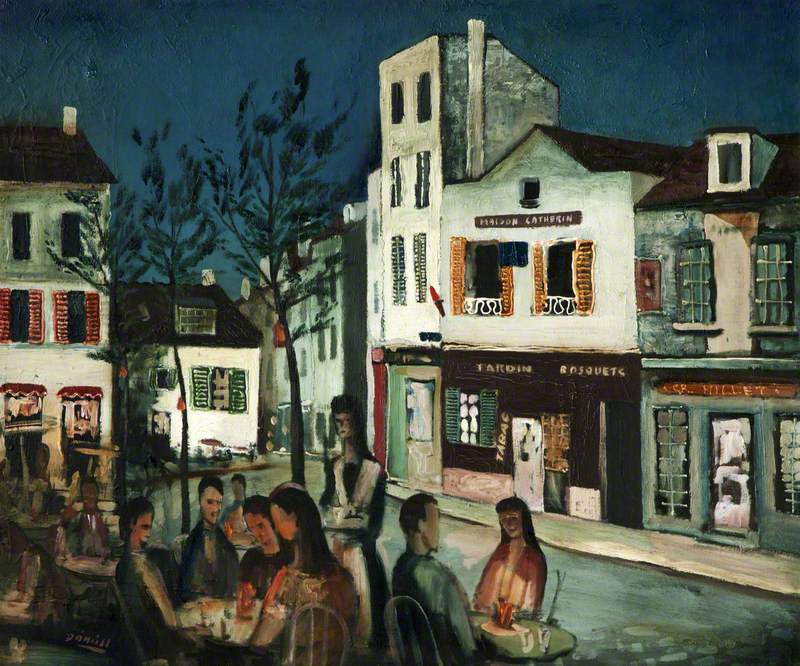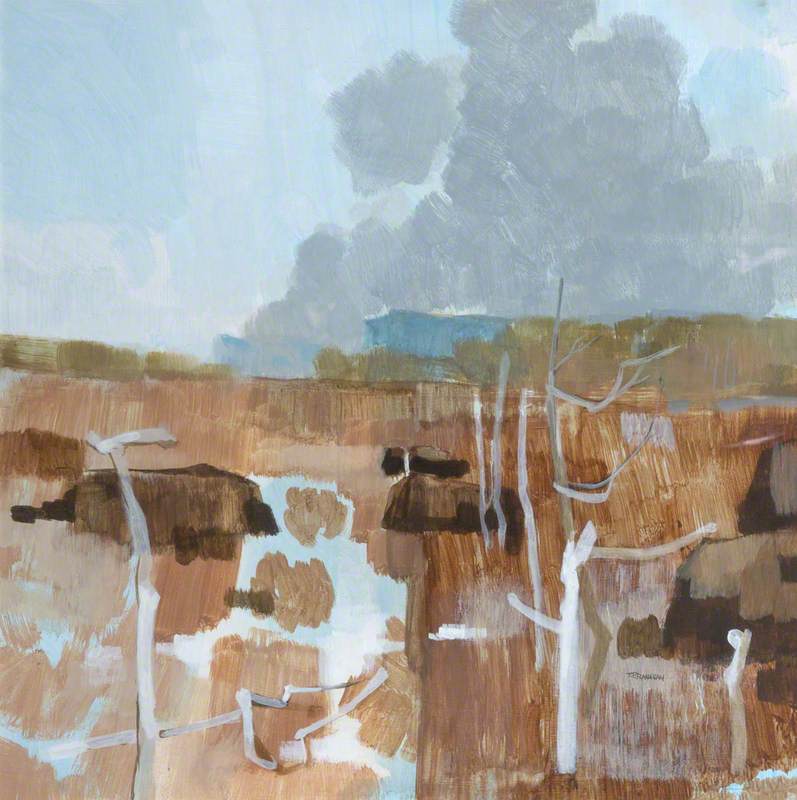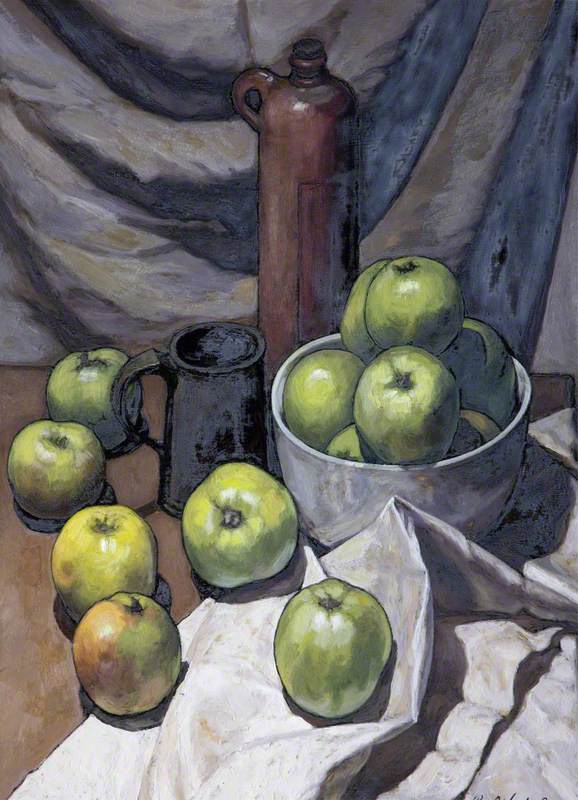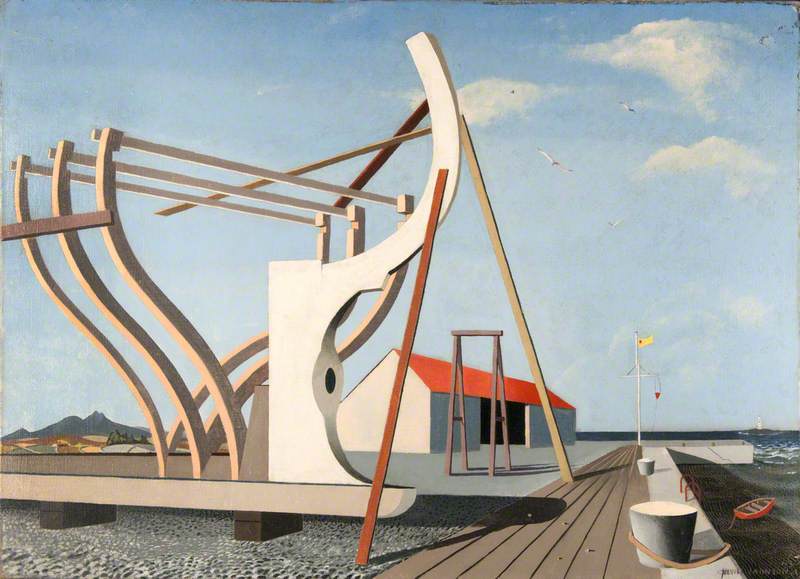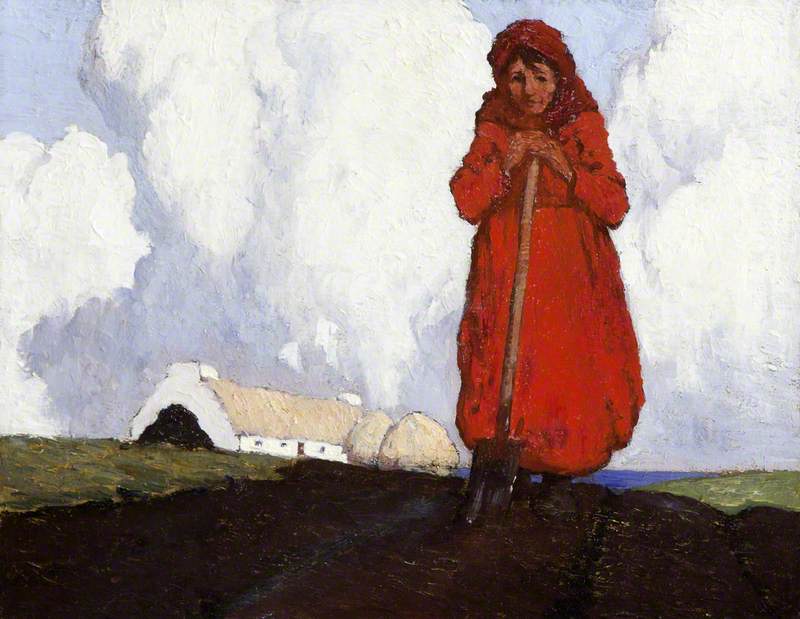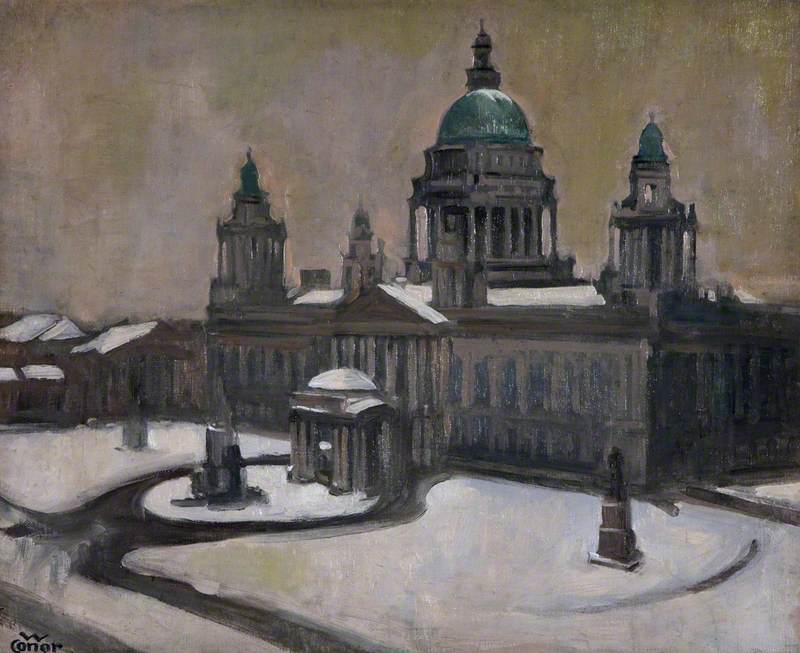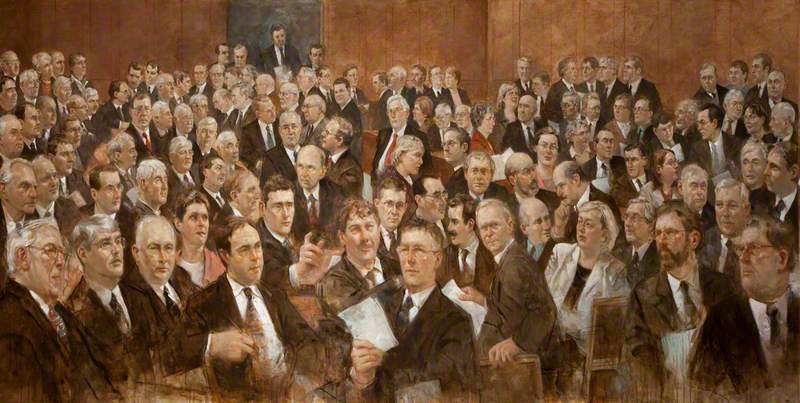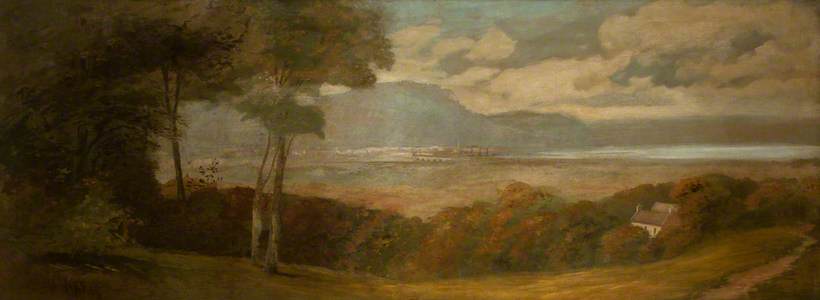One of Belfast's most prized art collections – the famous Carey paintings – a collection of 13 large canvases dealing with the history and mythology of the Belfast region, originally located in the area above the Ulster Hall balcony, are now on permanent display for everyone to enjoy.
When Belfast Corporation, now Belfast City Council, took over the Ulster Hall in 1903, a full refurbishment and redecoration began. The architect, Robert M. Young commissioned the artists Joseph W. Carey and Richard Thomson to produce the paintings between 1903 and 1908.
Fondly known as 'Joe', Joseph W. Carey (1859–1937) had a lengthy career as a popular watercolourist. He was the son of a Moravian minister of Kilwarlin, Co. Down, the Reverend J. W. Carey, and older brother of the painter and illustrator John Carey (1861–1943). Also an illustrator, Joseph Carey trained with the firm of Marcus Ward and Co., Belfast.
The paintings were part of the decorative scheme and not that easy to see in their original position, nor were they intended to be viewed close up or as works of art.
They are not accurate representations of the time, but more a nostalgic view of a time when Belfast was a rural town rather than the booming industrial city it was at the beginning of the twentieth century.
This was the most prestigious commission of Carey's career and included the paintings Origin of Shipbuilding in Belfast, Ritchie's Dock, White Linen Hall, 1896, Old Turnpike with Dublin Coach, Lisburn Road, and Blockade of Belfast by François Thurot, 1760.
The paintings sadly suffered a lot of damage over the years, by leaks and the effect of bombs, but also by misguided attempts to restore them. With the aid of a Heritage Lottery Fund Grant in 2009, Belfast City Council were able to conserve the paintings and relocate them to their current display, with very low light levels, in order that they will survive into the future.
The Ulster Hall is a concert hall and grade B1 listed building in Belfast, Northern Ireland. The hall hosts concerts, classical recitals, craft fairs and political party conferences. Over the years the Ulster Hall has played host to a diverse range of famous figures, from Caruso to Charles Dickens and John McCormack, Lord Carson and the Dalai Lama to Barry McGuigan and the Rolling Stones. During the Second World War, the Ulster Hall was used extensively as a dance hall providing entertainment for the US troops based in the province.
Alison Mitchelson, Former Art UK Paintings Project Coordinator









